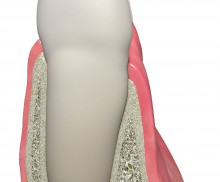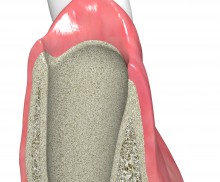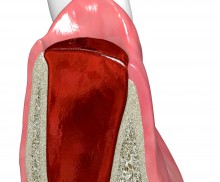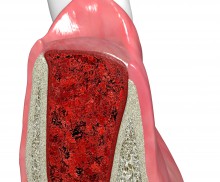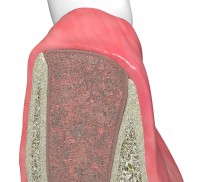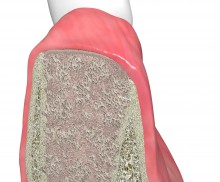Natural healing
|
Upon tooth extraction, the alveolar socket fills with blood. The injury activates a coagulation cascade, which leads to the formation of a fibrin clot. This blood coagulum is the starting point of the healing and regeneration of the socket. Signaling factors in the blood promote blood vessel formation (angiogenesis); they also attract circulating progenitor and immune cells as well as connective tissue cells, which then migrate into the coagulum and form the granulation tissue. Within a few weeks, the granulation tissue is reorganized, and the osseous regeneration of the socket begins. Thus, the formation of a stable coagulum is of great importance for the regeneration of the socket; this can be achieved by sealing the socket.
Stabilization can either be achieved by sealing the socket with a soft tissue graft (socket seal technique) or by protecting it through the application of a collagen sponge (collacone®). The spongy structure of collacone® stabilizes the coagulum and provides an ideal structure for the adhesion of thrombocytes, fibroblasts, and osteoblasts. Fine blood vessels grow into and through the cone; as a result, the preliminary tissue formed in the alveoli is supplied with oxygen, nutrients, and the essential signaling molecules, which support its bony regeneration.
Although the bone volume is usually adequate after 4–8 weeks (since the resorption of the alveolar bone has not yet started), any existing bony defect of the alveoli may be treated at the moment of implantation by augmentation with a grafting material and barrier-membrane covering.
Please Contact us for Literature.
